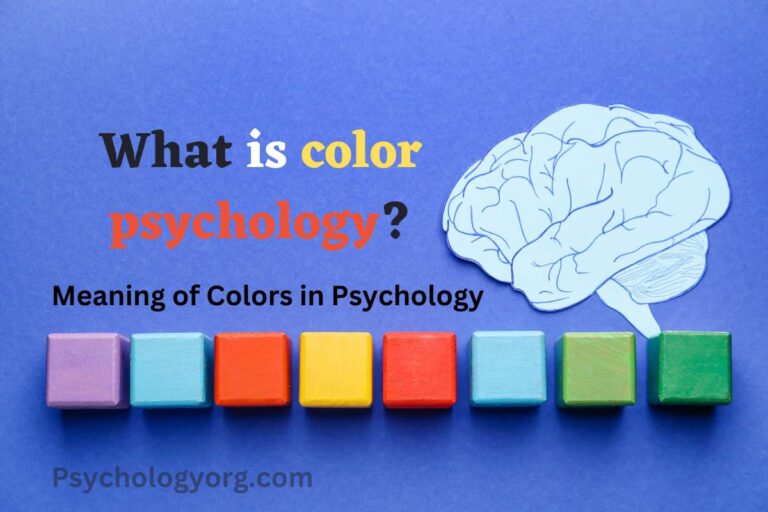Remember-Know Paradigm Psychology 2023
In the field of psychology, memory, and recognition are fascinating areas of study. Researchers have developed various paradigms and models to better understand how our memory works. One such paradigm is the remember-know paradigm, which aims to differentiate between conscious recollection and a sense of familiarity. In this psychologyorg article, we will delve into the remember-know paradigm, exploring its definition, underlying theories, experimental methods, and its implications for our understanding of memory processes.
Table of Contents
1. Understanding Memory and Recognition
Before we delve into the remember-know paradigm, it is essential to grasp the basics of memory and recognition. Remembrance is the cognitive function of encoding, storing, and retrieving details. Recognition, on the other hand, involves identifying previously encountered stimuli or events. Both processes play a crucial role in our daily lives, influencing our ability to learn, make decisions, and navigate the world around us.

2. Introduction to the Remember-Know Paradigm
The remember-know paradigm is a psychological framework developed to differentiate between two distinct forms of recognition: recollection-based recognition and familiarity-based recognition. It was first introduced by Tulving in the early 1980s. According to this paradigm, when individuals recognize something, they can experience a vivid recollection of the specific event (remember response) or have a feeling of familiarity without recollecting the specific details (no response).
3. The Dual-Process Theory
The remember-know paradigm aligns with the dual-process theory of recognition memory. According to this theory, recognition involves the interplay of two independent cognitive processes: recollection and familiarity. Recollection relies on the retrieval of specific contextual details associated with a previously encountered stimulus, while familiarity is based on a general sense of familiarity without explicit recall.
4. Experimental Methods
To investigate the remember-know paradigm, researchers have employed various experimental methods. Two common approaches are familiarity-based recognition and recollection-based recognition.
4.1 Familiarity-Based Recognition
In familiarity-based recognition tasks, participants are presented with stimuli and are asked to make judgments based on their subjective sense of familiarity. For example, they may be shown a list of words and asked to indicate whether each word is familiar or unfamiliar.
4.2 Recollection-Based Recognition
Recollection-based recognition tasks, on the other hand, require participants to retrieve specific details associated with previously encountered stimuli. They may be presented with stimuli and asked to recall additional information related to each stimulus, such as its source or context.
5. Brain Regions Involved
Neuroscientific studies utilizing techniques like functional magnetic resonance imaging (fMRI) have shed light on the brain regions involved in the remember-know paradigm. The prefrontal cortex, medial temporal lobe, and hippocampus are some of the regions that play crucial roles in differentiating between recollection and familiarity.
6. Implications and Applications
The remember-know paradigm has significant implications for our understanding of memory and recognition. It provides a valuable framework for studying memory-related disorders, such as Alzheimer’s disease and amnesia. Furthermore, it helps researchers explore how memory processes change with age and how different factors, such as emotional content or attention, influence recognition.
7. Critiques and Limitations
Like any psychological paradigm, the remember-know paradigm has faced critiques and limitations. Some researchers argue that the demarcation between recollection and familiarity may not be as clear-cut as the paradigm suggests. Additionally, the paradigm heavily relies on subjective introspection, which can introduce biases and challenges in interpreting the results.
8. Future Directions
As the field of psychology continues to evolve, future research on the remember-know paradigm may focus on refining experimental methods, exploring the neural mechanisms underlying recognition processes, and investigating the influence of various cognitive and emotional factors on memory.

Conclusion
The remember-know paradigm provides a valuable framework for understanding recognition memory and differentiating between recollection and familiarity. Through experimental methods and neuroscientific investigations, researchers have made significant strides in unraveling the complexities of memory processes. By continuing to explore this paradigm, we can gain further insights into the intricate workings of human memory.
Read Also: Does bipolar disorder get worse with age? Psychologyorg
FAQs
Q1: Can you provide real-life examples of the remember-know paradigm?
A1: Certainly! An example of the remember-know paradigm in action is when you encounter someone you have met before but can’t recall their name (no response) versus when you meet someone and vividly remember their name and previous interactions (remember response).
Q2: How does the remember-know paradigm contribute to the study of memory-related disorders?
A2: The paradigm helps researchers understand how memory processes are affected in disorders like Alzheimer’s disease or amnesia. It aids in distinguishing between deficits in recollection and familiarity, providing insights into the specific nature of memory impairments.
Q3: Are there any cultural or individual differences in the remember-know paradigm?
A3: Research suggests that cultural and individual differences can influence the balance between recollection and familiarity. Educational background, language, and personal experiences may shape how individuals respond to recognition tasks.
Q4: Can the remember-know paradigm be applied outside of psychological research?
A4: Absolutely! The paradigm’s principles can be useful in various fields. For example, marketers can apply it to understand consumer preferences and decision-making processes, while educators can utilize it to optimize learning and memory retention strategies.
Q5: How can the remember-know paradigm contribute to improving eyewitness testimonies?
A5: By distinguishing between recollection and familiarity, the paradigm can help assess the reliability of eyewitness testimonies. It allows researchers and legal professionals to evaluate the level of detail and accuracy in the recall of witnessed events.
If you want to read more articles similar to Remember-Know Paradigm Psychology, we recommend that you enter our category of Psychology.







